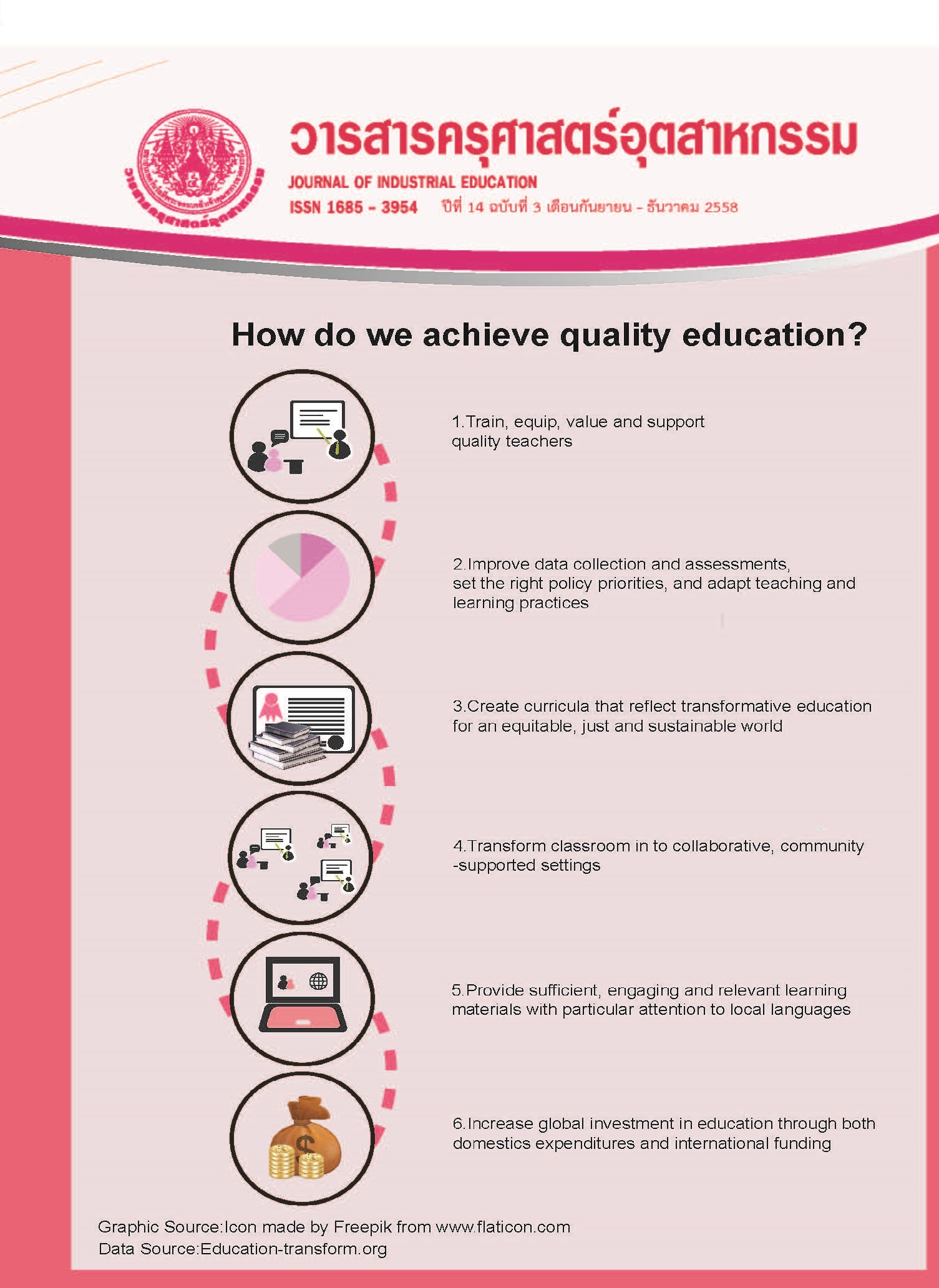Techniques Affecting Waste Of Motion Of Eyeglass Lens Production Processes In Essilor Manufacturing (Thailand) Co.,Ltd.
Main Article Content
Abstract
The purposes of this research were 1) to study the level of wastes of motion of eyeglass lens production processes in Essilor manufacturing (Thailand) Co.,Ltd. 2) to study techniques affecting waste of motion of eyeglass lens production processes in Essilor manufacturing (Thailand) Co.,Ltd. The samples of the study were 210 employees in Essilor Manufacturing (Thailand) Co.,Ltd. The samples were randomly selected by using sample random sampling method. The research instruments were questionnaires. The concurrent validity calculated by Rovinelli and Hambleton index was 0.080 and reliability calculated by the Cronbach alpha coefficient was 0.89. Data were analyzed by SPSS For Windows. Statistics for data analysis were percentage, arithmetic mean, standard deviation while Multiple Linear Regression was used to test the hypotheses. The research results found that:
1. The level of wastes of motion of eyeglass lens production processes of employees in Essilor Manufacturing Co.,Ltd, was at high level.
2. Pull System & Kanban (Visual control), Work Standardization and Smooth Production Sequence techniques had a positive influence on wastes of motion of eyeglass lens production process at statistical significant level of 0.01 respectively. While Line Balancing technique had a negative influence on wastes of motion of eyeglass lens production process at statistical significant level of 0.01.
Article Details
"The opinions and contents including the words in papers are responsibility by the authors."
"ข้อคิดเห็น เนื้อหา รวมทั้งการใช้ภาษาในบทความถือเป็นความรับผิดชอบของผู้เขียน"
References
Jamornchote, P. 2012. Management LevelStaffs’ Opinion Toward Competitiveness At Thai Summit Group. Journal of industrial Education, 11(1), p. 112-114.
[2] สำนักงานคณะกรรมการพัฒนาการเศรษฐกิจและสังคมแห่งชาติ. 2555. สภาวะทางเศรษฐกิจของประเทศในภาวการณ์ปัจจุบัน.กรุงเทพฯ: สำนักนายกรัฐมนตรี.
[3] Ohno. T. 1988. The Toyota ProductionSystem: Beyond Large Scale Production.Bangkok: RTC.
[4] มังกร โรจน์ประภากร. 2554. ระบบการผลิตแบบโตโยต้า. พิมพ์ครั้งที่ 6. กรุงเทพฯ:สมาคมส่งเสริมเทคโนโลยี (ไทย-ญี่ปุ่น).
[5] กัลยา วานิชย์บัญชา. 2552. สถิติสำหรับงานวิจัย.พิมพ์ครั้งที่ 4. กรุงเทพฯ: ธรรมสาร.
[6] บุญชม ศรีสะอาด. 2545.การแปลความหมายข้อมูลเทียบกับเกณฑ์เฉลี่ย.พิมพ์ครั้งที่ 7. กรุงเทพฯ: สุวีริยาสาส์น.
[7] เรณู สุขฤกษกิจ. 2554. ปัจจัยที่มีผลต่อความพึงพอใจในการปฏิบัติงานของบุคลากรในบริษัทท่าอากาศยานไทย จำกัด
(มหาชน).ดุษฎีนิพนธ์สาขาวิชาธุรกิจระหว่างประเทศคณะบริหารธุรกิจ มหาวิทยาลัยเทคโนโลยีราชมงคลธัญบุรี
Sukroesakit, R. 2011. Factors Affecting Job Satisfaction of Personnel of Airports of Thailand Public Company Limited.
Dissertation in International Business.Faculty of Business Administration, RMUTT.
[8] ยุทธณรงค์ จงจันทร์. 2555. การจัดสมดุลสายการผลิตเพื่อลดความสูญเปล่าในกระบวนการผลิตติดตั้งดั้มพ์. กรุงเทพฯ: มหาวิทยาลัยศรีปทุม.

